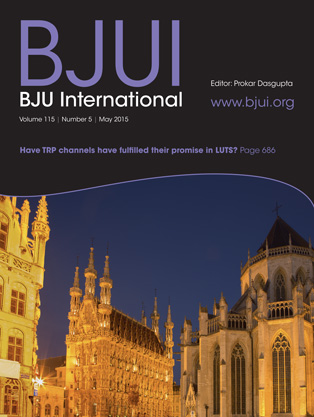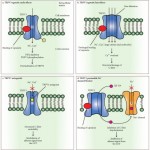Editorial: TRP channel – a reality that still requires many years of scientific efforts
Seventeen years have elapsed since the capsaicin receptor was first cloned by Caterina et al. [1] and the excellent review with an unusual provocative title by Deruyver et al. [2] was written. The capsaicin channel, re-named transient receptor potential (TRP) vanilloid receptor subtype 1 (TRPV1), is now commonly referred to as the founding member of the TRP family, as it currently includes 28 related channels, a number difficult to foresee in those early years [3].
TRP channels have been extensively studied in the lower urinary tract (LUT) with the aim of clarifying their role in micturition control and in the generation of LUTS. It is well accepted that TRP receptors have neuronal and non-neuronal expression [3, 4]. TRPV1 is fundamental to bladder hyperactivity and pain associated with LUT inflammation [3], while TRPV4 may participate in the generation of the normal sensation to void [5]. Another group of TRP receptors may even participate in bladder oncogenesis, which seems to be a role of TRPV2 [3]. The main substance of all this information is not a myth; rather it represents a large body of very solid scientific data.
There are certainly still many obscure areas. The distribution of TRP receptors in the bladder is certainly one of them. However, I disagree that a substantial part of available technical and financial resources have been allocated to study this matter. One should not forget that other matters, like the role of many TRP channels for bladder function, remain elusive. Broadly speaking, in my opinion, future key studies should tackle three very relevant but still unclear points. The importance of most TRP channels for bladder function is difficult to predict at the moment [3]. Just as an example, TRPA1 and TRPM8, which are sensitive to cold temperatures, are expressed in the bladder. However, the bladder, as all internal organs, is conserved at very constant physiological temperatures, making it difficult to understand the relevance of cold receptors to its function. Then, we need to find what the endogenous agonists for TRP receptors are in the LUT. Anandamide has been largely explored as an endogenous agonist for TRPV1 in the bladder [6], a fruitful observation as drugs able to manipulate endogenous levels of anandamide are currently being explored in clinical trials. The same holds true for the other members of the TRP family. TRPA1 may respond to infections due to its capacity to react to hydrogen sulphide [3]. But for the large majority of the TRP family endogenous agonists remain unknown. Finally, TRP antagonists that are simultaneously effective and safe must be generated. Most available TRPV1 antagonists, produced to date, although able to control bladder dysfunction in models of cystitis and spinal cord injury [3], cause hyperthermia and have been associated with an enlargement of ischaemic areas of the heart after coronary artery obstruction [3]. TRPV4 antagonists look very promising for controlling frequency but a compound safe for human use is still eagerly awaited [2]. Eventually the combination of antagonists for more than one of these receptors may prove effective at very low doses, so low that they do not generate serious adverse effects [7].
In conclusion, TRP receptors are a reality that still needs an enormous amount of work and dedication before becoming therapeutically useful. And that may take more time than we anticipate at the moment.



